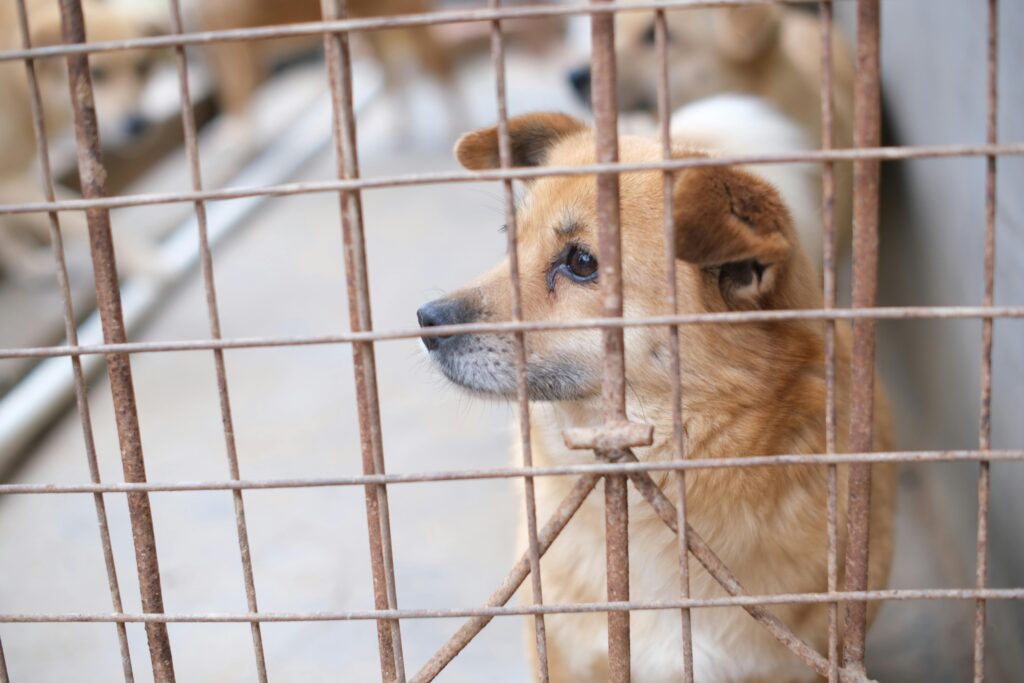Many pet owners, especially a majority who have just adopted a new puppy, often face the ordeal of dealing with a puppy whimpering in a crate, which can be a bit odd to comprehend. Creating a puppy can be an excruciating activity for both the owner and the puppy, as it can be a little stressful.
Some ways to help the owner and the puppy deal with the crating process include: Over this course, you will learn about some of the most useful ways to address the puzzle of why your puppy whimpers while in the crate.
In this blog, we will discuss the Crating Experience in detail and how you can improve this process for your puppy. Other things addressed here include providing solutions for anxiety, bathroom, and company-needing puppy scenarios.
Why do newborn puppies go through crate-whimpering episodes?
Once you figure out a few reasons to solve Puppy Whimpering in Crate, it becomes easier to embrace the other portion.
Realizing those reasons is the first step in solving the problem. Common ones include the following:
Separational irritability.
Puppies are pack animals and can feel distressed when away from their owners. If your Puppy Whimpering in Crate , this is probably a case of separation anxiety, particularly if the puppy has just been brought from a shelter or a breeder. This anxiety can result in whimpering, barking, or even an aggressive attitude when left unattended.
Need for Interaction
All puppies want to be noticed. For some, whimpering is the best way out. They can get bored or lonely and thus hope to be with you. Such behavior is usually observed more in puppies that have not grown enough to be independent.
Fear of Being Alone
Some puppies tremble when kept in a crate. Some puppies who are not accustomed to being alone whimpered out of fright. This is usually seen in puppies that have just been weaned from their mothers and are in a new place.
Wanting to Micturate or Defecate
Puppies that are 6 to 12 months old possess very limited bladder sizes and may whimper when needed to go out for small relievers.
If your puppy has been in the crate for some time, they may say they need to pee. It is important to understand the indicators telling your puppy to go outside.
Unknown Location
A puppy may be slightly scared of a new crate. If they have never had a crate and are subjected to one, they will probably cry during this time until they get used to the new surroundings. Puppies are used to a way of life and everything that surrounds them. Changes happening suddenly tend to make them stressed.
Feeling Hot Or Cold
If the crate is too hot, too cold, or uncomfortable, your puppy will no doubt whimper to show discomfort. Soft bedding material inside a crate and in the right position can go a long way in ensuring that your puppy is comfortable. Being in a nice place makes it easier to worry less about being created.
How to Help Your Puppy Stop Whimpering in the Crate
Having understood why a Puppy Whimpering in Crate, let’s find out what strategies are most helpful in achieving a greater comfort level for your puppy.
Develop a Positive Crate Association
Start Making sure that the puppy crate is a good welcome to the puppy, such as: Using Treats: Place some treats or toys in the crate so that the puppy will go in on its own. This enables them to link the crate to something pleasurable.
For a better understanding of the concept of positive reinforcement during feeding in a crate made for puppies who want to enjoy its positive features, you can try feeding your puppy their meals inside the crate, as it may help them see it more positively.
Gradual Introduction
When teaching your puppy how to use the crate for the first time, the best approach is to do it gradually. Keep the crate door open so they can enter on their own and close it only after entering. You may invite them to come up and explore the crate from a distance. A more gradual approach aids in lessening the anxiety and may instill further confidence.
Short Crate Sessions
A good principle to follow is to start with short intervals of trying it out before expanding the duration gradually if your puppy is successfully adapting. This eases the puppy’s adjustment to the new conditions without too much strain. For instance, they can start for around two or three minutes and gradually lengthen these times as they adjust or become more familiar with being inside the crate.
Provide Comfort Items
If the crate is made of soft bedding, a blanket, and your clothing, these items should also be placed inside the crate. Familiar scents may help soothe your puppy and allow some level of comfort. To entertain them, you can also put their favorite toys inside the crate with these comforting items.
Regular Bathroom Breaks
Your puppy ought to be permitted to take potty breaks from time to time. A puppy will feel the urge to pee after 6–8 hours, so ensure you take them out for a pee break regularly, especially after meals and after playing with them. As a good rule of thumb, taking the puppy out every hour every month will help prevent them from peeing indoors.
Whine Whenever The Need Arise
If you know your puppy does not have to go out and they are just whining for attention, you should avoid responding to them. Doing that will reinforce their behavior. After that, wait until there is absolute silence before breaking them out of the crate.
Arrive And Leave Calmly
When Puppy Whimpering in Crate or taking them out, always be calm and keep the commotion to a minimum. The same goes for getting them out. Being panicky helps no one. Staying calm will help improve their feeling of safety.
Soothe Them With Music And Diffusers
While your Puppy Whimpering in Crate, always take the help of a pheromone diffuser or calming music, as these will assist you in lowering their anxiety; setting diffusers is known for creating a positive environment that soothes them.
How Long Will My Puppy Whimper?
The time it takes for a puppy to stop whimpering while in their crate depends on the puppy. There are those adorably clueless puppies that occupy a few days or even a couple of weeks to adjust to their new surroundings, and there are also puppies who seem to change within a few days. The following describes some factors that contribute to these:
Age: The older puppies will take longer to adjust than the younger ones.
Temperament: If a puppy is naturally anxious, it may take longer to adjust to its surroundings.
Previous Experiences: Past trauma caused by negative connotations to overlapping associations with confinement would mean a longer time is required to re-associate positively.
Conclusion: Puppy Whimpering in Crate
Among the countless other issues that arise is Puppy Whimpering in Crate ; many new pet owners face this issue. Considering the reasons behind this behavior and some strategies to help the puppy get used to it, petting it may even be required to help the puppy feel safe.
It is important to understand that starting crate training with the puppy may take a long time, but with determination and when the puppy stops viewing the crate as a negative place, the puppy will learn.
FAQs: Puppy Whimpering in Crate
Is It True That Puppies Whimper When They Are Placed In Crates?
To answer the question, yes, puppies do tend to whimper during the initial stages of crate training since they are placed in the delusion of having to adapt to an environment that they aren’t used to and, for the first time, feel loneliness.
Should I Leave My Puppy To “Cry It Out” While In The Crate?
The etiquette to handle a puppy cry when placed in a crate varies from situation to situation. For instance, if you think their biosPipe do problems are Makeupmisters tales, simply Attention Seekers. There is no harm in ignoring the whining, but petting them is the optimal way if their crying is due to worry or even the need to potty.
When Do Puppies Show Indications Of The Need To Go To The Potty?
Dogs, as they always have shown, remain constant in their indications. Their need to ring a bell is indicated by the changing pace, whining, and sniffing anywhere around the crate. If you observe these behaviors, it’s best to take them outdoors.
What If My Puppy Whims More In The Crate While I’m Away?
Take a look into what may be causing your puppy to whimper excessively. Get the bathroom breaks, comfort items, and proper exercise before putting them in their cage. If the behavior continues, contact a vet or a dog trainer. ACCR.
Can Crate Training Work in Reducing the Effects of Separation Anxiety?
Your puppy can develop a sense of feeling secure in the crate through proper crate training. They need to have a space they can go to while figuring out that it is safe when alone. ACCR.







